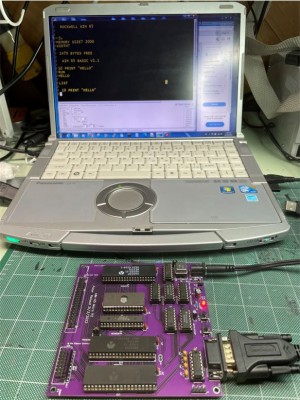
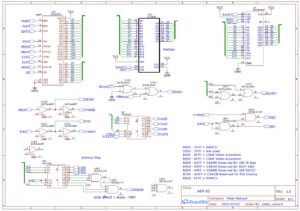
|
a reduced version AIM-65 Mini |
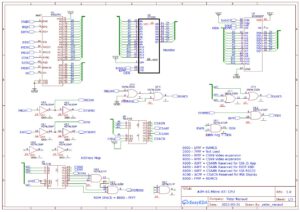 |
micro AIM-65 version 2 |
For AIM 65 ROMS and manuals, see the AIM 65 pages!
About small SBC systems
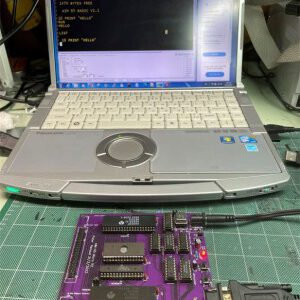


|
a reduced version AIM-65 Mini |
 |
micro AIM-65 version 2 |
For AIM 65 ROMS and manuals, see the AIM 65 pages!
The page on the AIM 65 reproduction AIM65-CPLD-3v3 by Yasushi Nagano (Labo Asabu) has now a manual. Quite a large detailed 180+ pages one!
Working with Mr Nagano, I have translated his manual for the AIM 65 reproduction, the AIM65-CPLD-3v3, from Japanese to English. The manual is now downloadable from this page.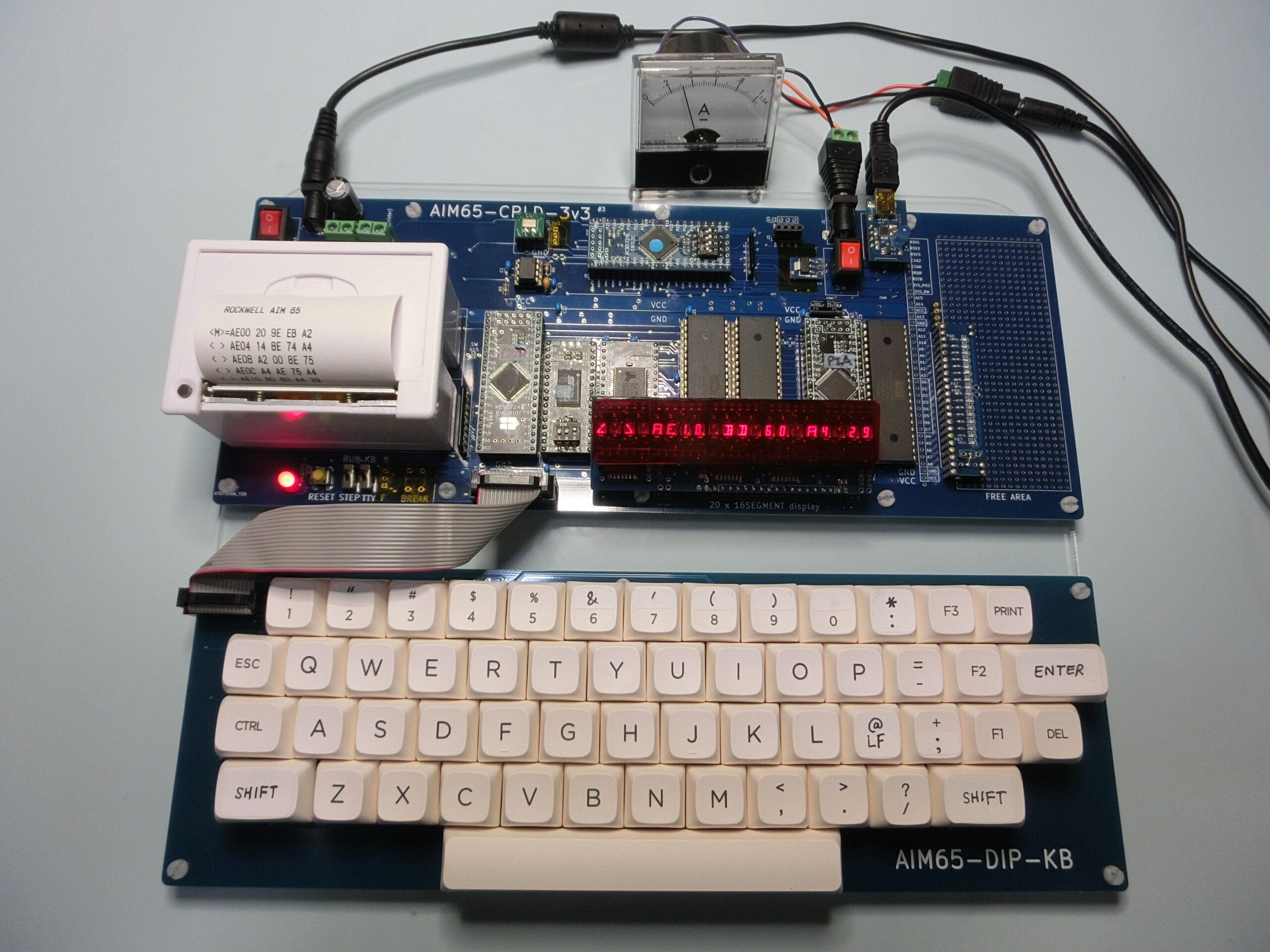
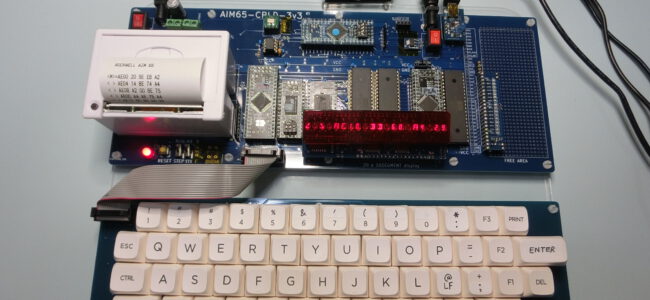
Mr. Nagano, from Tokyo, Japan send me photos and circuit diagram of an AIM 65 reproduction he designed an build: the AIM65-CPLD-3v3.
It is a beautiful, functional, and aesthetically faithful clone. In fact, he built two, one with a CPLD 3V3 version and a 5V version with a 6532 RIOT.

The AIM65-CPLD-3v3 will become available as a complete system (sold on ebay) in the near future.
Features of the AIM-65 reproduction AIM65-CPLD-3v3
Hardware
Power Supply
Clock
Software
The following can be selected by setting the DIP SWITCH of the FLASH memory board.
Manual of the AIM65-CPLD-3v3 (Version 0.3 May 2 2023)
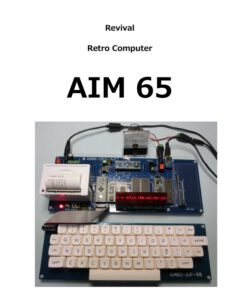
|
AIM 65 Building a Retro-Computer manual,the AIM65-CPLD-3v3 Rev 03 |
Mr. Nagano also made a version with a voltage of 5V and running at 2MHz. R65C02, R65C22, R6532A are used for it.
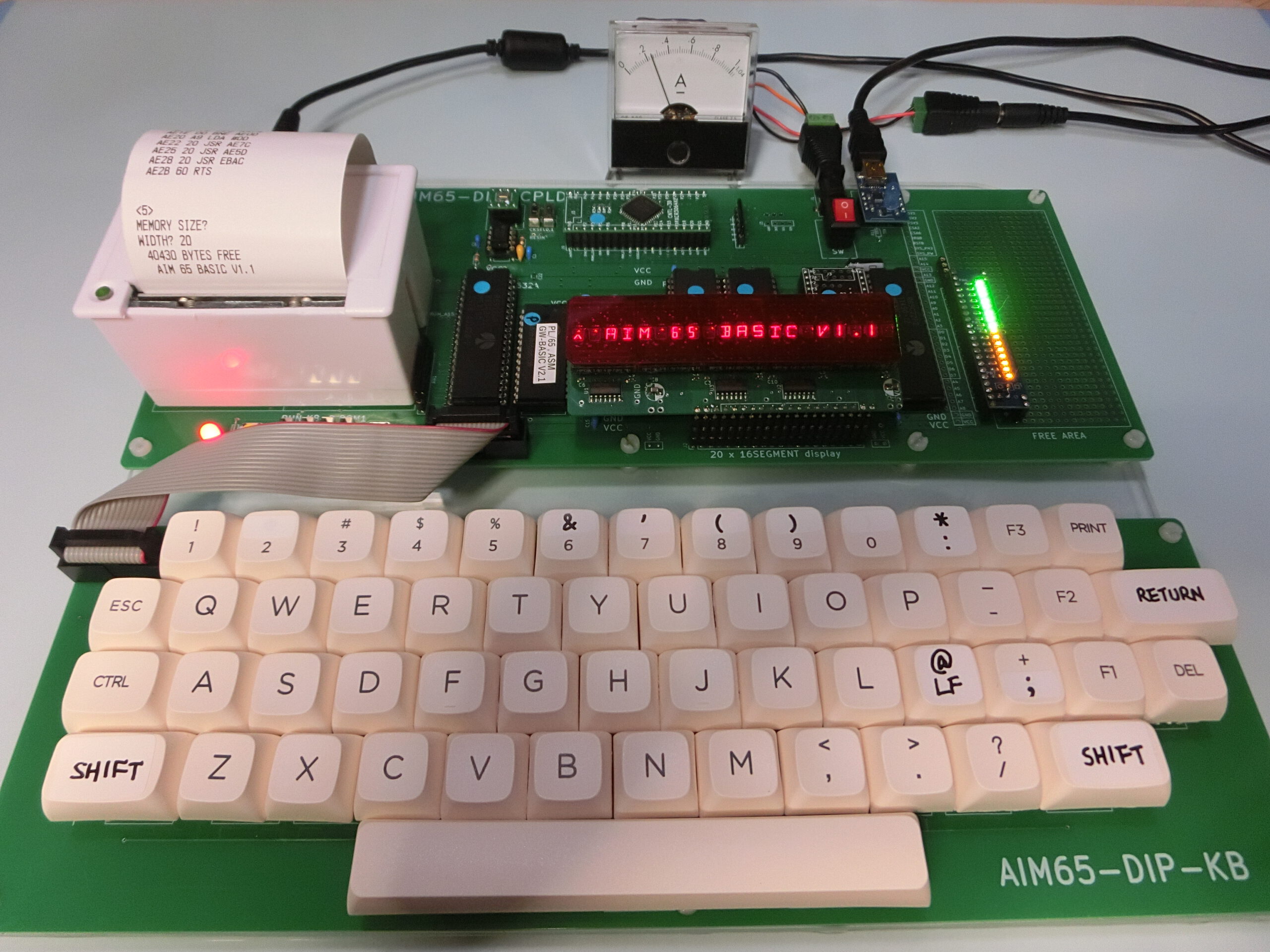
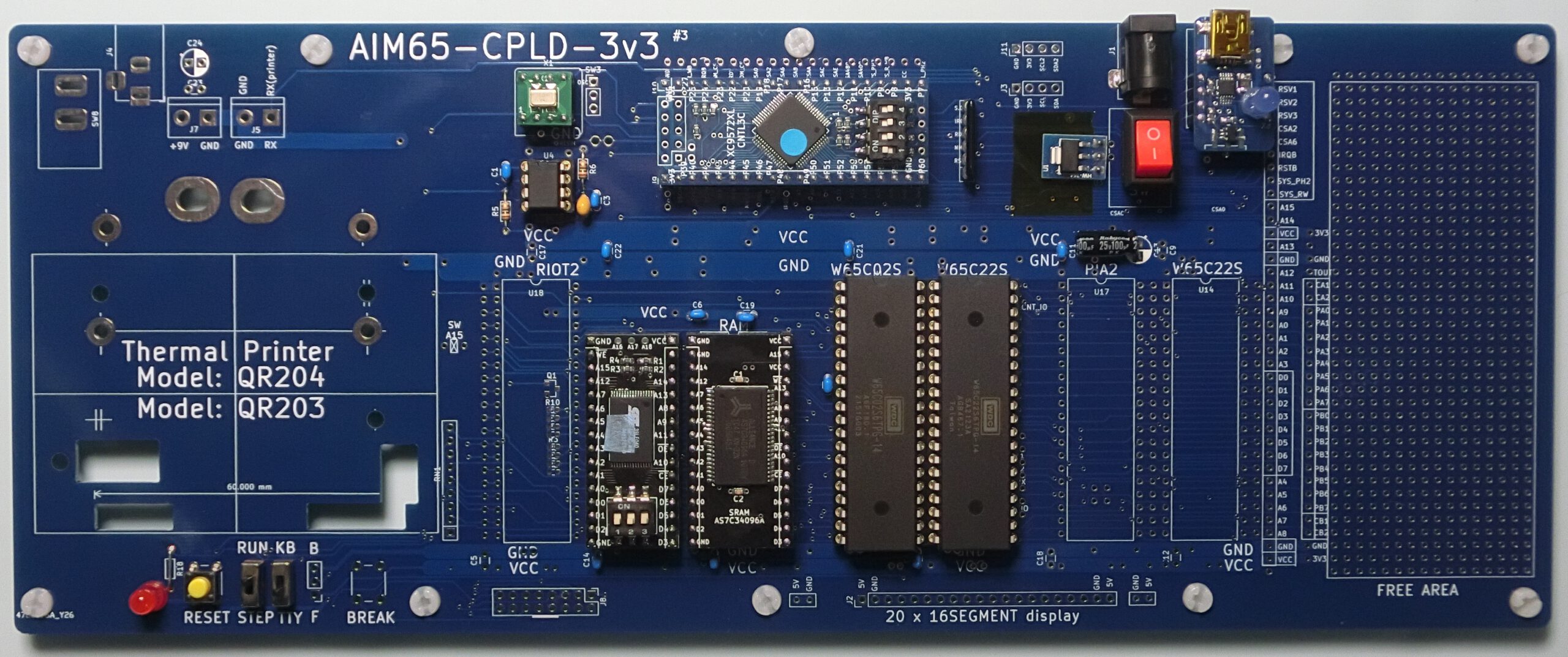
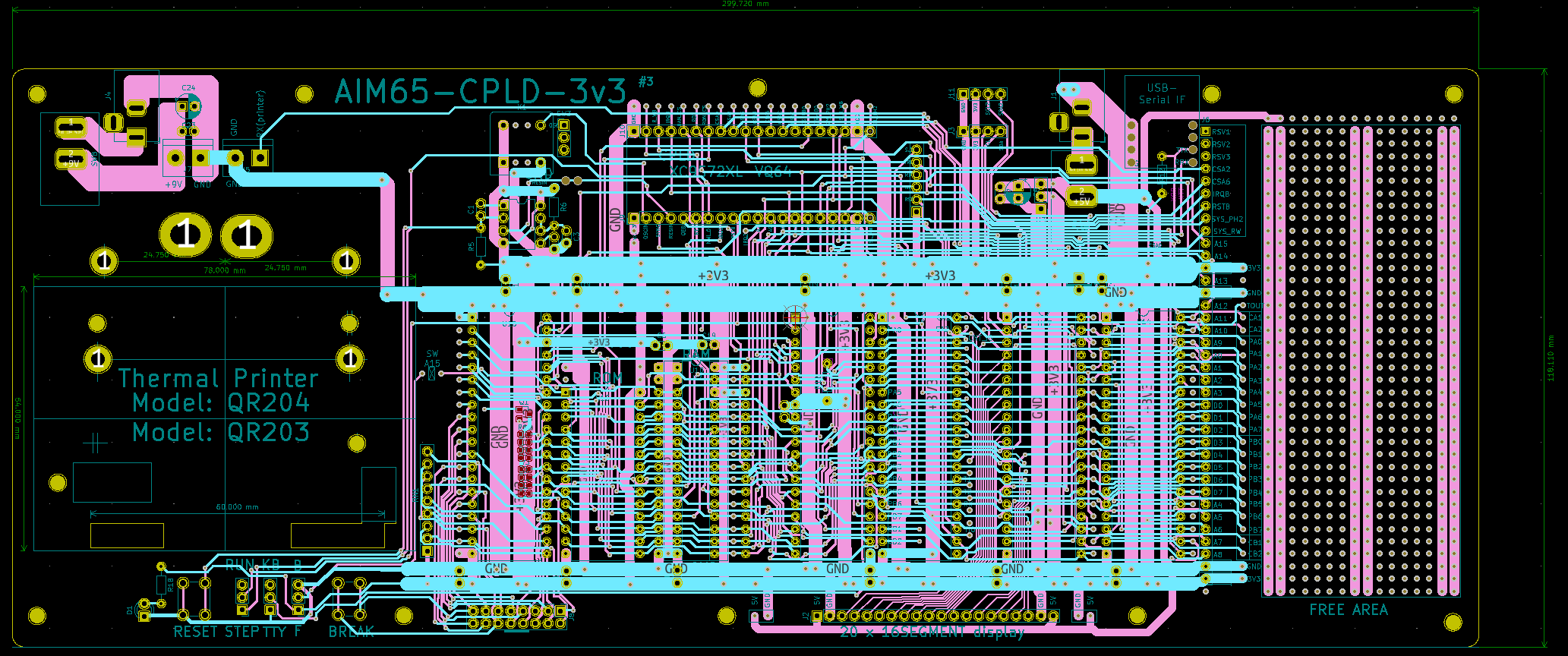
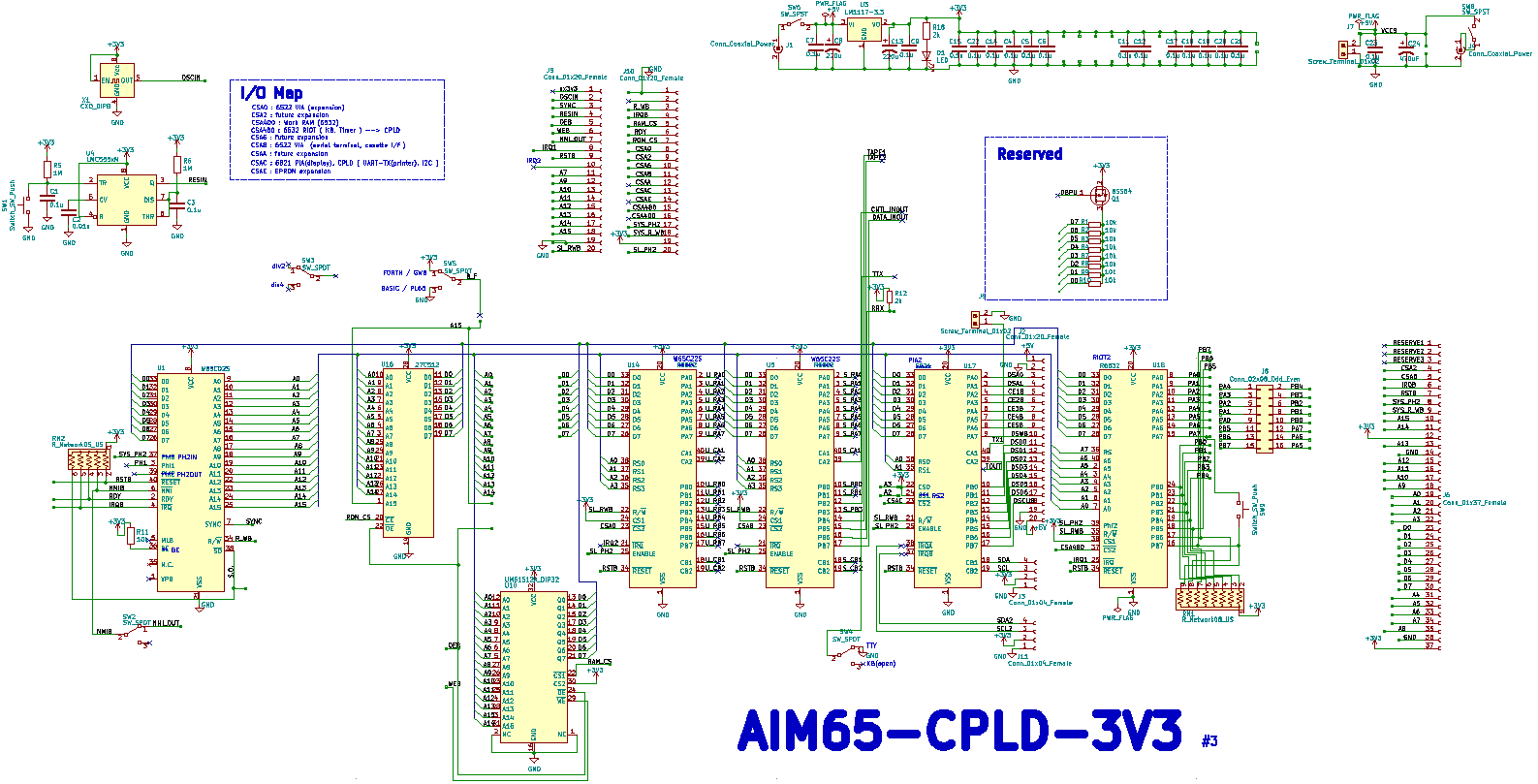
Older versions:
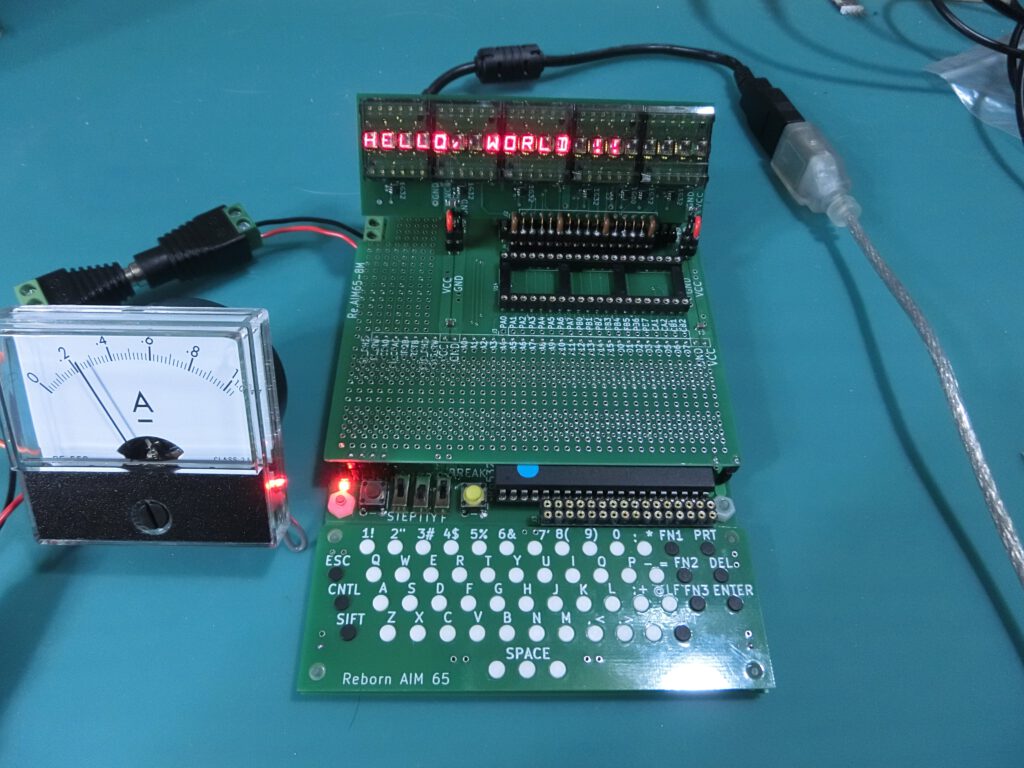
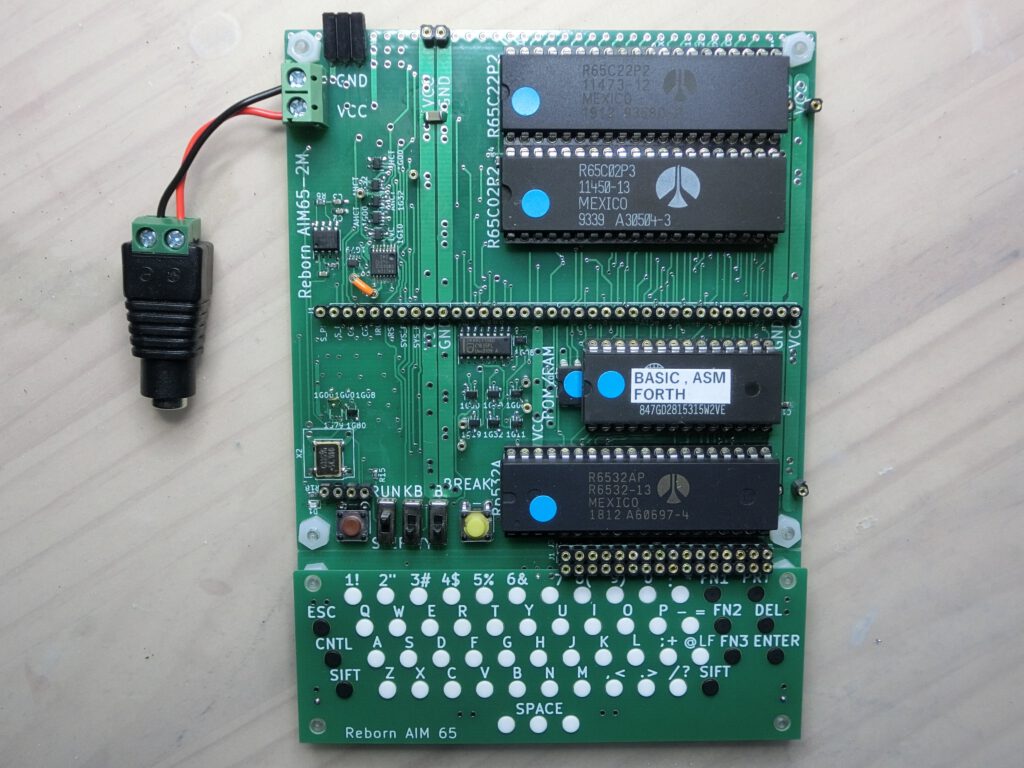
Mr. Nagano as user Labo Asabu on Youtube
User Marco Rey y Sander has received one of the first systems, sent to developers:
Follow Mr. Nagano on twitter: Asabu Labo
In 1983 the company ABM sold a floppy disk system, Commodore IEC 1541 based, for the AIM 65. It also offered a serial interface for the AIM 65 TTY connection and a parallel port.
The system consists of a PCB with the interfaces, a manual and the AH5050 ROM. The user has to add the Commodore diskdrive and IEC cable.
The 1541 Commodore drive was quite popular in the 80ties for SBCs, since it was affordable, the serial IEC connection simple (one 7406 TTL IC and a couple of I/O lines) and the drive itself intelligent, the host did not have to implement a DOS with low level drivers and file system. It is slow, and has a low capacity, small SBCs like the AIM 65 are more than happy with that
Nowadays floppy drives like the 1541 are like dinosaurs. But the SD2IEC 1541 replacement devices are cheap!
[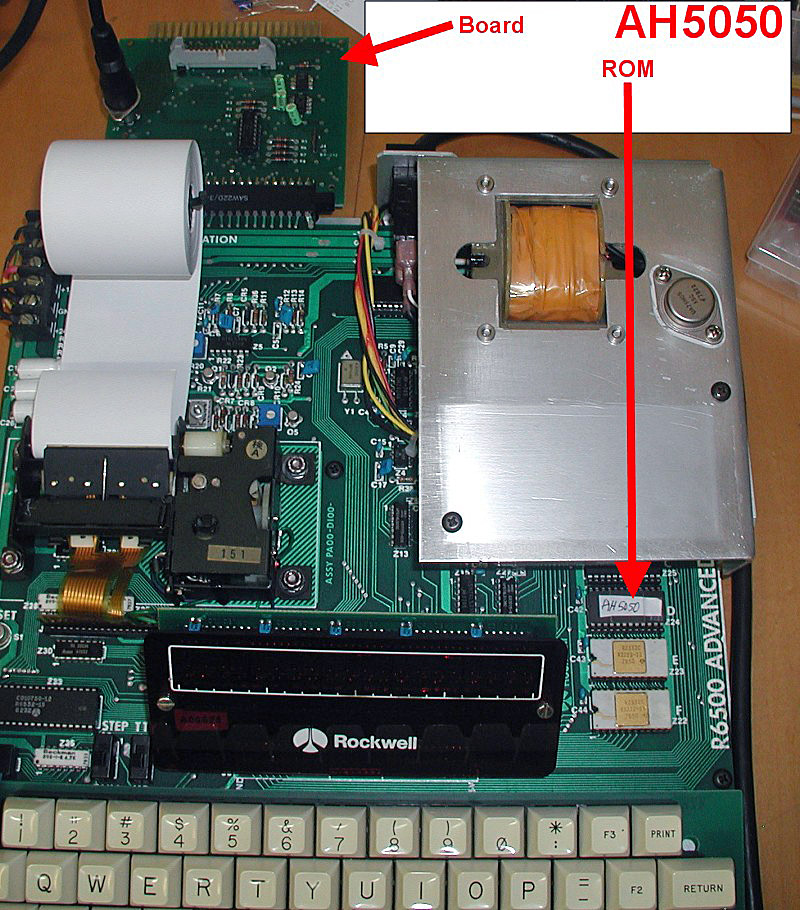
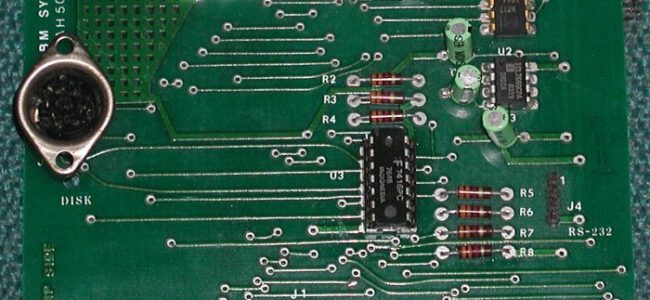
In 1983 the company ABM sold a floppy disk system, Commodore IEC 1541 based, for the AIM 65. It also offered a serial interface for the AIM 65 TTY connection and a parallel port.
The system consists of a PCB with the interfaces, a manual and the AH5050 ROM. The user has to add the Commodore diskdrive and IEC cable.
The 1541 Commodore drive was quite popular in the 80ties for SBCs, since it was affordable, the serial IEC connection simple (one 7406 TTL IC and a couple of I/O lines) and the drive itself intelligent, the host did not have to implement a DOS with low level drivers and file system. It is slow, and has a low capacity, small SBCs like the AIM 65 are more than happy with that
Nowadays floppy drives like the 1541 are like dinosaurs. But the SD2IEC 1541 replacement devices are cheap!
See the links below for current implemntatiosn pf the AH5050 disk interface. Simple to make yourself, just a 7406 and an IEC DIN connector!
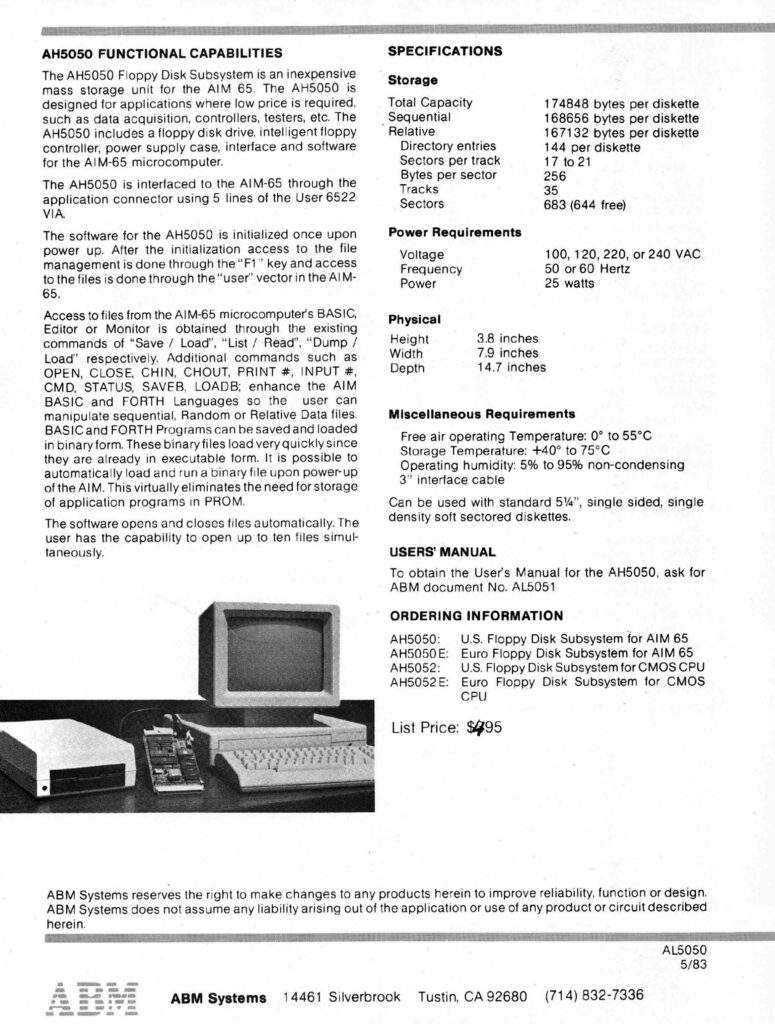
Downloads
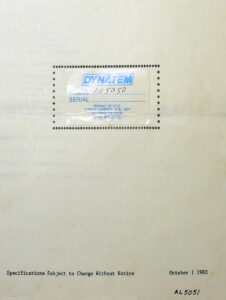 |
AH5050 User’s manual ABM document No. AL5051 |
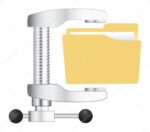 |
AH5050 ROM at $D000 $D000 is the usual place for the assembler, see below for an alternative version of the assembler ROM for $B000 |
 |
AH5050-4 ROM, some extra code |
 |
INIBAS program, see manual how to use. Required to use Basic, frees up overlapping zeropage locations |
 |
STARTUP program, see manual |
 |
AH5050 – partially commented disassembly |
 |
AH5050 – hexdump |
 |
AH5055 version of assembler for $B000 |
Links
Ralf (ralf02, forum64.de) obtained a working AIM 65, alas without the keyboard.
So he designed and build one. In his own words:
Wenn ich an den Rechner 24 Volt (für den Drucker) und 5 Volt anlege, startet er schon einmal. Allerdings war leider keine Tastatur dabei. Es gibt zwar Tastatur-Nachbauten, die bei Ebay & Co für sehr viel Geld verkauft werden, aber ich dachte mir, das kann man doch auch selbst machen. Also habe ich mit KiCad eine Platine entworfen, mit Cherry MX Tastern bestückt, “blanke” Tastenkappen von Amazon draufgesetzt und mit dem Brother Etikettendrucker beklebt.
Translated:
When Ralf connected the 24 V (printer) and 5 V, the system started. But the keyboard was missing. Though there are keyboard replicas on ebay , costing quite a lot of money, I decided to build one myself. Kicad for the PCB, Cherry MX keys, blank keycaps and a Brother labelprinter for the lettering.
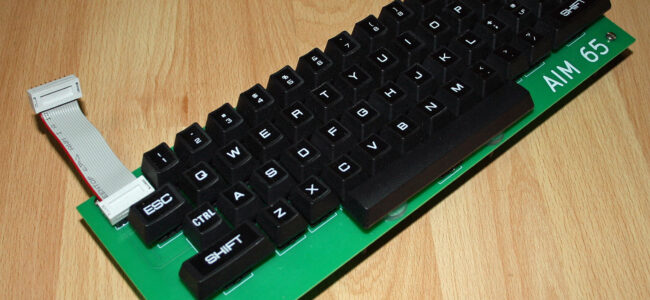
Ralf (ralf02, forum64.de) obtained a working AIM 65, alas without the keyboard.
So he designed and build one. In his own words:
Wenn ich an den Rechner 24 Volt (für den Drucker) und 5 Volt anlege, startet er schon einmal. Allerdings war leider keine Tastatur dabei. Es gibt zwar Tastatur-Nachbauten, die bei Ebay & Co für sehr viel Geld verkauft werden, aber ich dachte mir, das kann man doch auch selbst machen. Also habe ich mit KiCad eine Platine entworfen, mit Cherry MX Tastern bestückt, “blanke” Tastenkappen von Amazon draufgesetzt und mit dem Brother Etikettendrucker beklebt.
Translated:
When Ralf connected the 24 V (printer) and 5 V, the system started. But the keyboard was missing. Though there are keyboard replicas on ebay , costing quite a lot of money, I decided to build one myself. Kicad for the PCB, Cherry MX keys, blank keycaps and a Brother labelprinter for the lettering.
The result is a quality keyboard that fits the AIM 65 very well.
Ralf gave me permission (thanks!) to publish the photos and gerbers of the PCB.
Here the archive with the gerbers of the PCB.
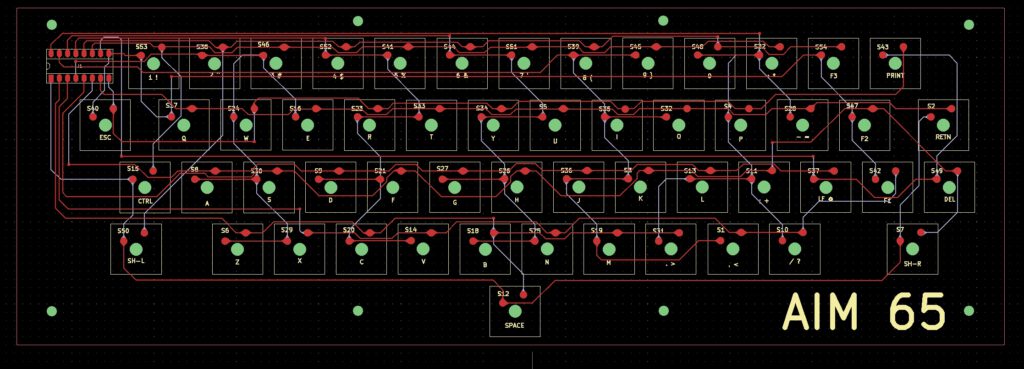
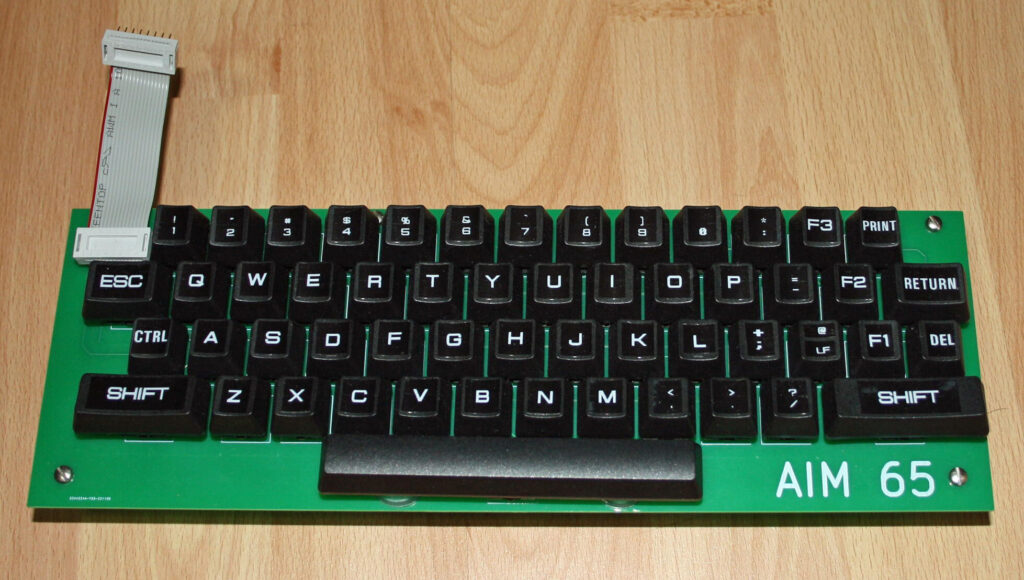
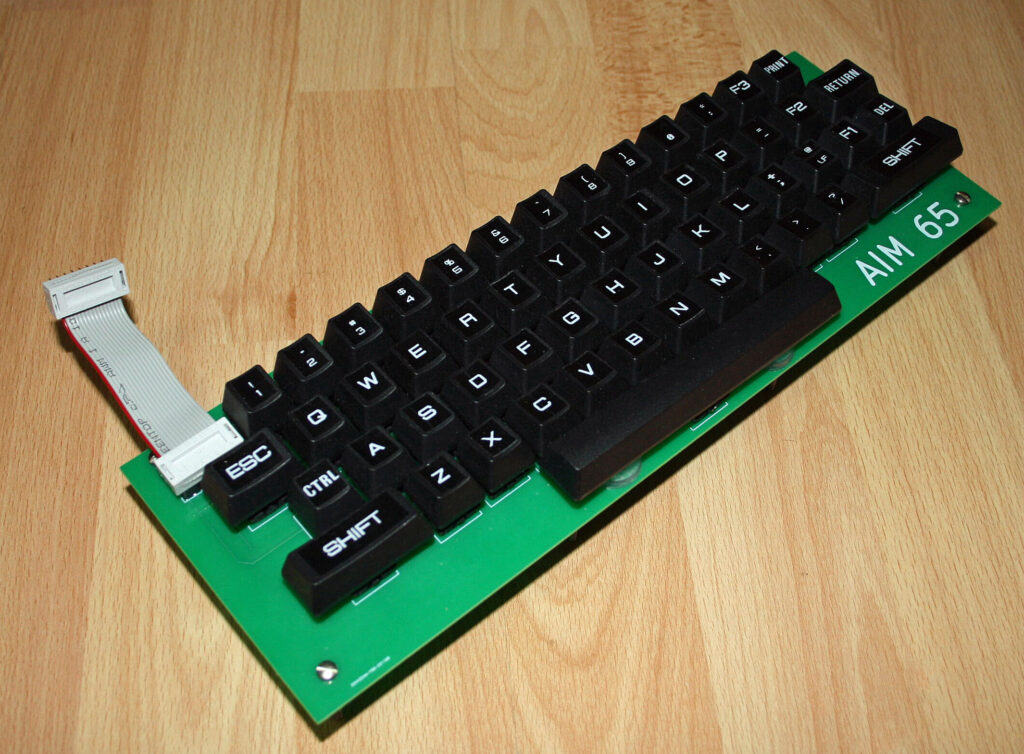
Mr Nagano published videos and photos of an early prototype of his AIM 65 clone.
Mr. Nagano, from Tokyo, Japan send me photos and circuit diagram of an AIM 65 clone he built. It is a beautiful and functionally and esthetic faithful clone. In fact, he built two, one with a CPLD 3V3 version and a 5 V version with a 6532 RIOT.
On the pagetable Commodore source archive I found the source of the AIM 65 Assembler ROM R3224.
Now on the AIM 65 software page:
Assembler ROM R3224 source from pagetable github